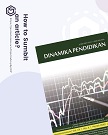Decision Model for Saving Stocks Based on TPB and Financial Literacy
(1) Universitas Negeri Semarang
Abstract
This study investigated the behavior of investment decisions that were not only assumed on rationality but were also affected by other factors, such as psychological factors, one of which was financial literacy. There were so many causal studies of financial literacy and investment intentions. However, there were still issues of inclusion between studies. Therefore, this study adopted a theory of planned behavior, proposed as an explanatory model for investment intentions associated with financial literacy. By proposing attitude, subjective norms, and perceived behavioral control related to investment as a mediator of investment intention, the unit of analysis was students who were members of the capital market study group spreading across universities in Semarang. The sample used was 170 students conducted through a questionnaire survey, then analyzed descriptive statistics and SEM with the PLST Warp. The results showed that all variables, both attitudes, subjective norms, perceptions of behavioral control, significantly mediated the effect of financial literacy on investment intention in partial mediation. For future research, you can explore the variables of financial education as early predictors associated with this research model to get a holistic picture related to the effectiveness of student financial education.
Keywords
Full Text:
PDFReferences
Ajzen, I., & Fishbein, M. (1977). Attitude-behavior relations: A theoretical analysis and review of empirical research. Psychological Bulletin, 84, 888-918
Ajzen, I. (1991). The theory of planned behavior. Organizational Behavior and Human Decision Processes, 50, 179-211.
Ajzen, I., & Fishbein, M. (2000). Attitudes and the attitude-behavior relation: Reasoned and automatic processes. In W. Stroebe & M. Hewstone (Eds.), European Review of Social Psychology, 1-33. John Wiley & Sons.
Ajzen, I. (2006). Constructing a TPB Ques-tionnaire: Conceptual and Methodological Considerations. (revised January 2006)
Ajzen, I. (2013). Constructing a theory of planned behavior questionnaire. https://www.midss.org/sites/de-fault/files/tpb.construction.pdf
Alleyne,P. and Broome,T. (2011), Using the Theory of Planned Behavior and Risk Propensity to Measure Investment Intentions among Future Investors, Journal of Eastern Caribbean Studies, 36 (1), 67-78.
Asri, Marwan, (2013). Keuangan Keperilakuan, Edisi Pertama, BPFE-Yogyakarta, Yogyakarta.
Azwar, Saifuddin. (2000). Sikap Manusia Teori dan Pengukurannya. Yogyakarta: Pustaka Pelajar.
Badan Pusat Statistik (BPS). 2020. Pertumbuhan Ekonomi Indonesia Tahun 2019. Jakarta. Berita Resmi Statistik No.16/02/Th. XIX.
Chang, H-J. (1998). An Alternative View on Regulatory Reform in Korea, paper presented at the conference on 'Korea's transition to a high-productivity economy', 6–7 February at the Centre for Korean Studies, University of Hawaii at Manoa, Honolulu.
Chen, H., & Volpe, R.P (1998). An Analysis of Personal Financial Literacy Among. College Student. Financial Services Review, 7(2), 107-128.
Cooper & Schindler. (2011). Business Research Methods 11thed. New York:McGraw-Hill Companies Inc.
Cox, R., Brounen, D., & Neuteboom, P. (2014). Financial literacy, risk aversion and choice of mortgage type by households. The Journal of Real Estate Finance and Economics, 50(1), 74-112.
Cuong, P. K., & Jian, Z. (2014). Factors Influencing Individual Investors’ Behavior: An Empirical Study of the Vietnamese Stock Market. American Journal of Business and Management, 3(2), 77–94.
Hendarto, K. A., Dharmmesta, B. S., Purwanto, B. M., & Moeliono, M. M. (2018). Attitude and purchase intention towards Tempe producers joining the protests a study in Central Java. EKUITAS (Jurnal Ekonomi dan Keuangan), 20(1). 18-36
Fedorova, E. A., Nekhaenko, V. V., & Dovzhenko, S. E. (2015). Impact of financial literacy of the population of the Russian Federation on behavior on financial market: Empirical evaluation. Studies on Russian Economic Development, 26(4), 394-402.
Garg, N., & Singh, S. (2018). Financial literacy among youth. International Journal of Social Economics, 45(1), 173-186.
Hariady, Edy. (2012). Analisis Pengaruh Sikap, Norma, Kontrol dan Preferensi Risiko Terhadap Minat Wanita Berinvestasi di Reksadana. Fakultas Ekonomi dan Bisnis UKSW. Salatiga.
Huston, S. J. (2010). Measuring financial literacy. Journal of Consumer Affairs, 44(2), 296-316.
International Monetary Fund (IMF). 2020.The World Economic Outlook. Washington DC
Sumardi, S. (2019). Keputusan Mahasiswa Dalam Memilih Perguruan Tinggi Ditinjau Dari Analisis Bauran Pemasaran dan Perilaku Konsumen. Jurnal Pengembangan Wiraswasta, 21(1), 53-62.
Kock, N., & Hadaya, P. (2018). Minimum sample size estimation in PLS-SEM: The inverse square root and gamma-exponential methods. Information Systems Journal, 28(1), 227–261.
Kock, N. (2019). WarpPLS User Manual: Version 6.0. Laredo, TX: ScriptWarp Systems.
Kreitner, Robert dan Kinicki, Angelo. (2005). Perilaku Organisasi, buku 1 dan 2, Jakarta : Salemba Empat.
Lusardi, A. & Mitchell, O.S. (2014), The economic importance of financial literacy: theory and evidence, Journal of Economic Literature, 52(1), 5-44.
Mowen, J. C. (1995), Consumer Behavior 4th edition. New Jersey. Prentice Hall.
Nofsinger, J. R. (2005). Social mood and financial economics. Journal of Behavioral Finance, 6(3), 144-160.
Remund, D. L. (2010). Financial Literacy Explicated: The Case for a Clearer Definition in an Increasingly Complex Economy. Journal of Consumer Affairs, 44, 276-295.
Sivaramakrishnan, S., Srivastava, M., & Rastogi, A. (2017). Attitudinal factors, financial literacy, and stock market participation. International Journal of Bank Marketing, 35(5), 818-841.
Sudirman, I Made Surya Negara dan Dwijosumarno, Bambang Hadi Santoso, 2013, Investor Behavior in the Investment Decision Making: Are Expected Utility Theory, Prospect Theory, and Belief System Theory Have the Ability to Explain?, Forum Ilmiah Nasional, Vol. 54.
The Economist Intelligence Unit. (2016). China Going Global Investment Index. Hongkong.
Theodora, B. D. (2016). The effect of family economic education towards lifestyle mediated by financial literacy. Dinamika Pendidikan, 11(1), 18-25.
Triwidisari, A., Nurkhin, A., & Muhsin, M. (2017). The Relationships Between Instagram Social Media Usage, Hedonic Shopping Motives and Financial Literacy on Impulse Buying. Dinamika Pendidikan, 12(2), 170-181.
Vitt, L. A., Anderson, C. A., Kent, J., & Lyter, D. (2000). Personal finance. Washington, DC: fannies mea foundation.
Xiao, J. J., & Porto, N. (2017). Financial education and financial satisfaction. International Journal of Bank Marketing, 35(5), 805-817.
Zhou Jian, Khoa Cuong Phan. 2014. Factors Influencing Individual Investor Behavior: An Empirical Study of the Vietnamese Stock Market. American Journal of Business and Management. 3(2), 77-94.
Refbacks
- There are currently no refbacks.

This work is licensed under a Creative Commons Attribution 4.0 International License.


.png)

.png)





